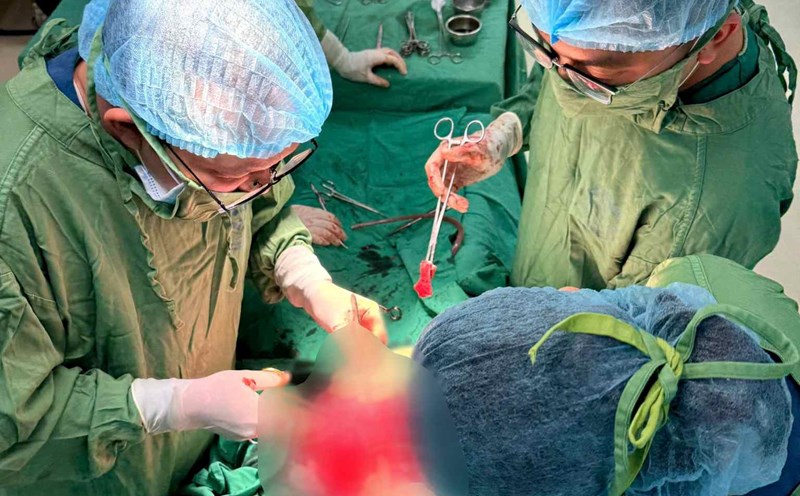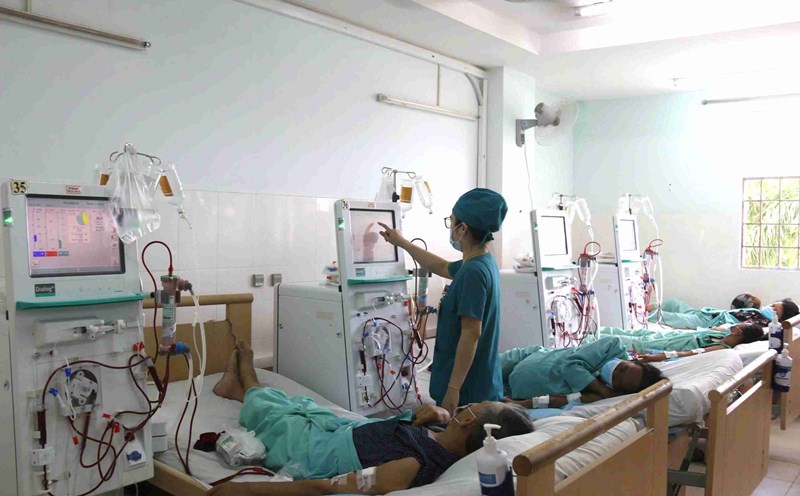The patient is a 47-year-old man working as a construction worker in Hanoi. The accident occurred suddenly, the patient slipped while standing on a wall on the scaffolding of the 4th floor, falling straight to the ground from a height of more than 12 meters. Immediately, the patient was taken to Thanh Nhan Hospital (Hanoi) in a state of purple, rapid breathing, severe chest pain and almost unable to speak.
Through examination, doctors determined that the patient had many severe injuries such as many broken left ribs, airflow - severe emphysema of the lungs, widespread lung collapse, acute respiratory failure, blood flowing heavily into the renewal gland, bronchi, and unstable hemorrhage.
BSCKI Nguyen Tien Lam, Intensive Care Unit, the doctor who directly treated the patient, said: These injuries are all life-threatening factors, especially when present at the same time. The patient was quickly given pulmonary drainage and bronchial endoscopy to stop bleeding. However, due to severe pulmonary cramps, the amount of blood still continuously flowed into the airway.
After 24 hours of hospitalization, the patient's condition worsened very quickly. The patient had to have an endotracheal appointment, with continuous oxygen loss and increased CO2. The continuous flow of blood through the air intake caused the doctor to "not be able to breathe" at times.
"If we continue to maintain normal ventilators, the patient will definitely die. If the blood in the lungs cannot be controlled, the risk of death will also occur immediately. The treatment team was in a dilemma and had to decide to set up an ECMO to save the patient's life. The patient faced two simultaneous risks of death: acute respiratory failure due to inactivity and severe infection due to blood - epidemic overloading the lungs. If lung function is not replaced with ECMO, all efforts will be late," BSCKI Nguyen Tien Lam shared.
During the 5 days of ECMO, the patient underwent a bronchial endoscopy to pump blood every day, the parameters were continuously adjusted according to the smallest developments. Gradually, the amount of blood in the lungs decreases, ventilation improves, and respiratory index is more stable. By the 7th day after the accident, the patient had successfully been treated for ECMO, marking a major turning point in his treatment journey.
After overcoming the critical condition, the patient continued to receive resuscitation care, physical therapy and rehabilitation. Nearly 3 weeks after the accident, the 47-year-old construction worker was able to walk on his own two feet when leaving Thanh Nhan Hospital.











